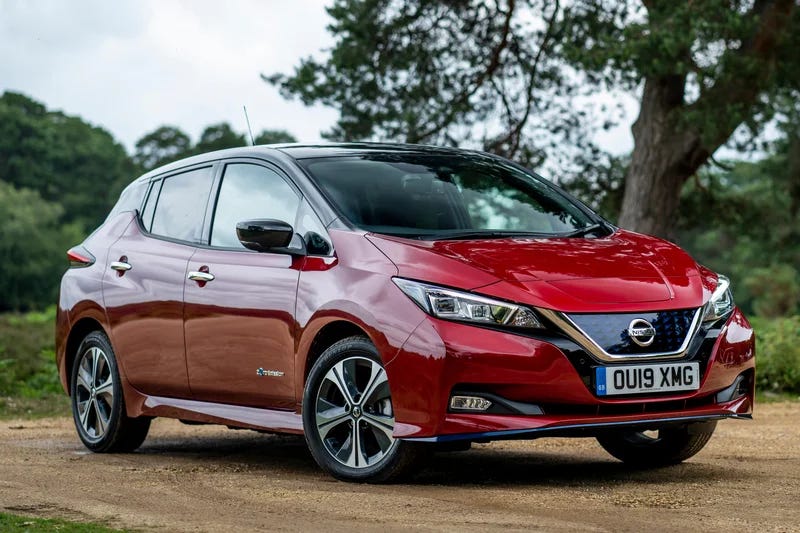Why Electric Vehicles (EVs) Excel in Hot Weather: A Deep Dive
New data shows electric vehicles excel in high temps, with less air conditioning impact on range than gas cars. We analyse the factors giving EVs key benefits in hot weather.
Electric vehicles (EVs) are often associated with range loss in cold weather, a well-documented phenomenon. However, when it comes to hot weather, EVs may have an edge over their internal-combustion counterparts. This article explores how EVs perform in hot weather, particularly when using air conditioning.
The Impact of Air Conditioning on EV Range
Recurrent, a company specialising in battery health reports for used EVs, conducted an analysis of data from 7,500 vehicles to understand the impact of hot temperatures and air conditioner use on range. The study found that air conditioning has a much smaller impact on range than heaters used in cold weather. The air conditioning only begins to affect total range when temperatures rise above 85 degrees Fahrenheit (29 degrees Celsius).
Among the vehicles analysed, the average range loss at 80 degrees (26.6 degrees Celsius) was a mere 2.8%, increasing slightly to 5% at 90 degrees (32.2 degrees Celsius). The data also showed an average range loss of 31% at 100 degrees (37.7 degrees Celsius), but Recurrent noted that this is based on a very limited sample.
Why Hot Weather Isn't as Much of an Issue for EV Range
The limited number of EV drivers out in triple-digit temperatures illustrates one reason why hot weather isn't as detrimental to range as cold weather. In the summer, the average temperature change needed to make a car interior comfortable is smaller, at 20 to 25 degrees, compared to 50 degrees in winter. Therefore, less energy is required.
Unlike internal-combustion cars, there is also no difference in energy use when running the air conditioning in an EV while idling or driving. That's because EVs don't have a heat-producing engine that the air conditioning has to fight against to lower temperatures. The lack of engine heat can be a problem for warming EV cabins in cold temperatures, but it's an advantage in hot weather.
Pre-cooling and Energy Saving
EVs can also be set to pre-cool their cabins while plugged in, which can save a significant amount of energy. The most energy-intensive part of air conditioning use is cooling down the cabin, with less energy needed to maintain a set temperature. It may take 3-5 kw of energy to get a 95-degree (35 degrees Celsius) car to a comfortable temperature of around 70 degrees (21.1 degrees Celsius), according to Recurrent, but it takes only around 1 kw to keep it there.
Pre-cooling and Energy Saving: A Closer Look
One of the unique features of electric vehicles (EVs) is the ability to pre-cool their cabins while still plugged in. This feature can lead to significant energy savings, especially in hot weather conditions.
The process of cooling down the cabin is the most energy-intensive part of air conditioning use. It requires a significant amount of energy to lower the temperature from a hot 95 degrees Fahrenheit (35 degrees Celsius) to a comfortable 70 degrees Fahrenheit (21.1 degrees Celsius). According to Recurrent, this process may consume between 3-5 kilowatts of energy.
However, once the cabin reaches the desired temperature, maintaining it requires much less energy, around 1 kilowatt. This is where pre-cooling comes into play. By cooling the cabin while the vehicle is still plugged in, the initial energy-intensive cooling process can be powered by the grid rather than the car's battery. This not only saves battery power but also extends the vehicle's range.
Here are some tips to maximise the benefits of pre-cooling:
Time it right: Set your EV to start pre-cooling shortly before you plan to drive. This ensures the cabin is at a comfortable temperature right when you need it without wasting energy cooling it too early.
Use a smart charger: Some smart chargers can coordinate with your EV to start charging when pre-cooling is complete, ensuring your battery is topped up before you hit the road.
Park in the shade or use a sunshade: This can help keep your car cooler to start with, reducing the amount of cooling needed.
Keep the windows closed: While it might be tempting to open the windows to let out hot air, keeping the windows closed during pre-cooling can help the process be more efficient.
By understanding and utilising the pre-cooling feature, EV owners can enjoy a comfortable driving experience in hot weather while also maximising their vehicle's range and battery life.
Other Factors Favouring EVs in Warmer Weather
There are a few other factors that lead to advantages for EVs in warmer weather than in cooler weather. Tyre pressures are likely to be higher, leading to lower rolling resistance; aerodynamic losses will be slightly lower; and the battery cells themselves are more likely to be closer to their comfort zone.
Cold-Weather Range Loss and Battery Degradation
Recurrent has also looked at cold-weather range loss, finding that it does indeed occur, but varies by model. EVs with heat pumps tend to retain most of their range. Recurrent also found that most EVs now have more than enough range to cover driving needs, so it essentially amounts to more time spent at the charger.
Weather extremes can also lead to more battery degradation, but as data from the firm recently suggests and confirms, it's not likely to brick your EV.
Conclusion
In conclusion, while EVs do experience range loss in extreme weather conditions, they perform remarkably well in hot weather, especially when compared to internal-combustion vehicles. The use of air conditioning in EVs has a minimal impact on range, making them a reliable choice for summer driving. As the EV market continues to evolve, these advantages are likely to become even more pronounced, further solidifying the case for EV adoption.
Charging Your Electric Vehicle at Home: Facts and Figures
Electric vehicles (EVs) are becoming increasingly popular in the UK, and with this rise comes the need for convenient and efficient charging solutions. One of the most common methods of charging an EV is at home, offering convenience and cost-effectiveness. This guide will walk you through the process of home charging, from installation to optimisation,…








So full of it. Clueless🤣🤣🤣🤣🤣🤣🤣🤣🤣🤣🤣🤣🤣🤣🤣🤣🤣🤣🤣🤣🤣🤣🤣🤣🤣🤣
🤣🤣🤣🤣🤣🤣🤣